The price of gold has had a rollercoaster year, so what does it mean for your jewellery box?
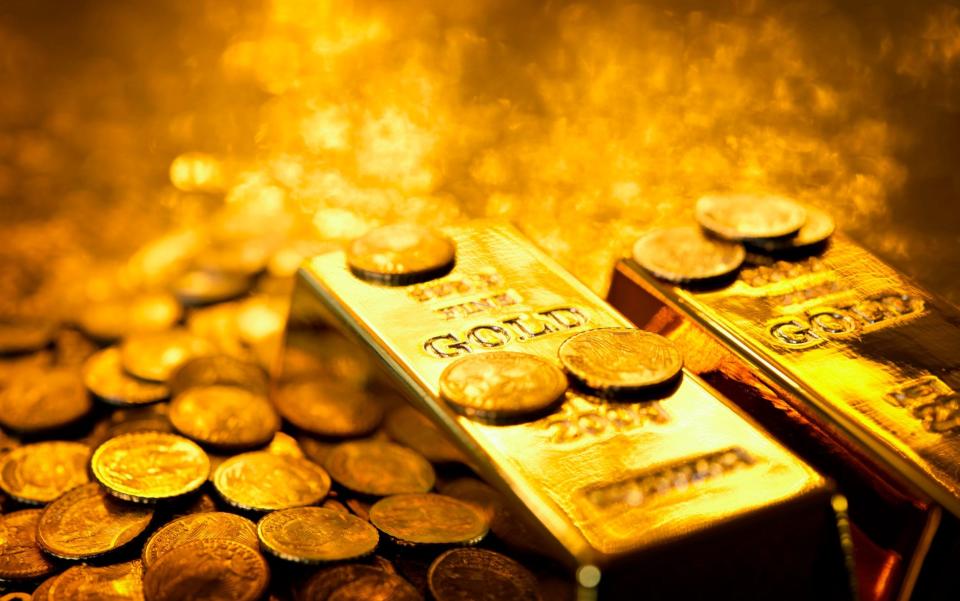
In the imaginary gold portfolio that is two of my grandmother’s gold bracelets, some kitchen scales and a loupe (or jeweller’s magnifying glass), I’ve made a significant loss over the last eight months. In August 2020, gold reached an all-time high, having risen a massive 30% over a year, and had I sold Granny’s 9kt gold chain-link bracelets then, I would have made approximately £144 - 22% more than I would today (prices have since come down).
Gold prices are stabilising now as much of the world eyes a post-vaccination stage of the pandemic. When economic stability goes down, the price of gold rises, and the opposite tends to be true, too. Gold isn’t the only precious metal used in jewellery, and it’s not the only one prone to fluctuations in value, but consumers might be surprised by how much it affects the jewellers themselves.
“Thank goodness!” says Christopher Thompson Royds, (only in far saltier language), when I asked him how he’s finding things now that gold prices have lowered. “Gold is my main material as a jeweller, but it is also a global commodity and with every shock and knock to the economy, investors seek protection in its safe-haven status. Last year became a nightmare; everyone flocked to it, seeking financial refuge from corona chaos, prices soared, and I stopped buying.”
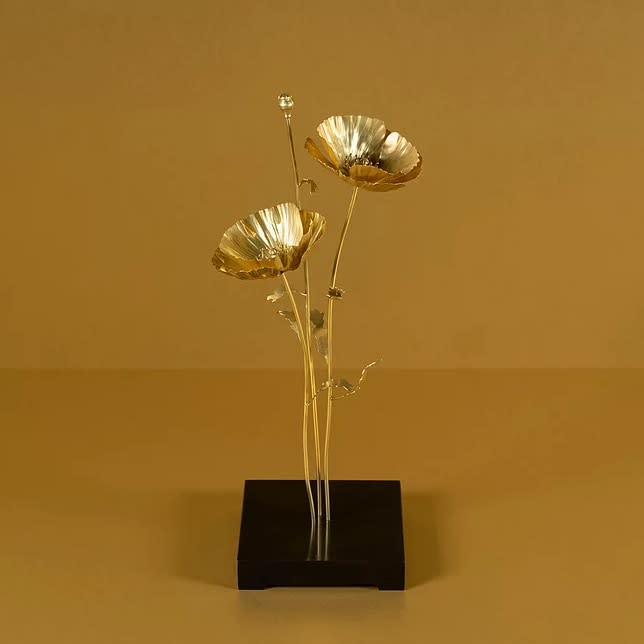
18kt gold Poppy stud earrings and brooch, POA, Christopher Thompson Royds
Thompson Royd’s solution was to stop making new pieces and instead develop models in brass, eking out his existing stock of gold sheet and wire to cover actual orders and refraining from buying any new metal. “Why was I going to buy at the top of the market, especially considering that all the galleries I show with were closed and most exhibitions cancelled or postponed?” he said.
“The timing [of gold’s price reduction] is great, though,” he continues. “I’ve been working on models for the last six months, and now that we’re preparing to open up, I’m starting to make them in gold. In a weird way it’s been useful; the ridiculous gold price gave me time to think and plan and work on some really fabulous new collections with other brands.”
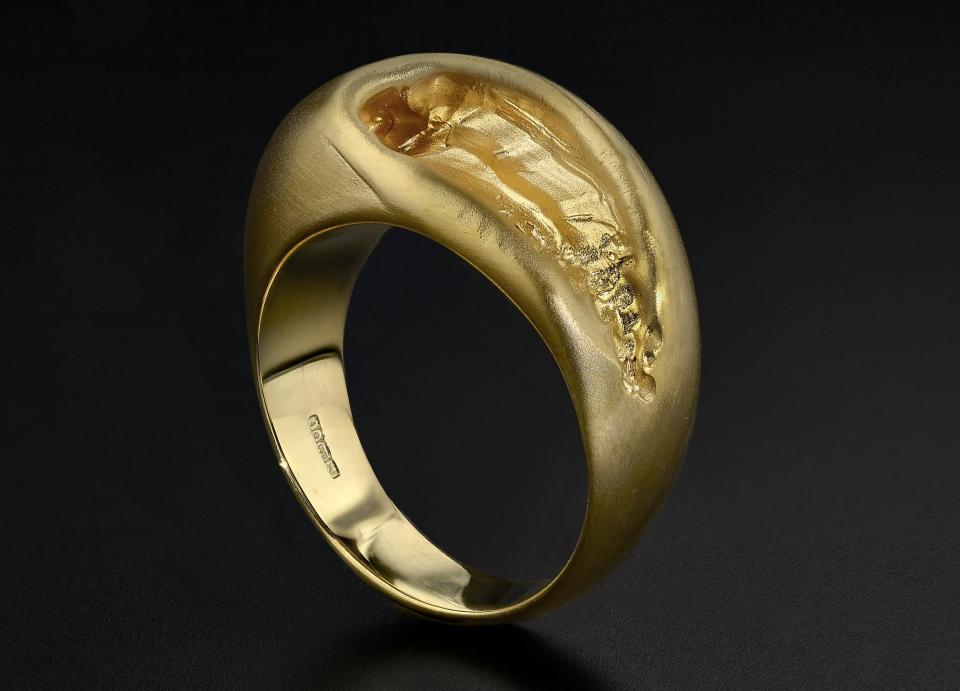
18kt gold Tube ring, POA, Emefa Cole
Emefa Cole, who works with a range of metals and carves from wax, and who last summer had a piece acquired by the V&A for its permanent collection, relies on the casting company she uses to price up her models. “Customers often expect quick answers regarding how much a design will cost in various metals,” she says. “But it’s not that straight forward. It depends on the accuracy of the weight of the wax model, constantly fluctuating prices, service charges, etc. I’d imagine big brands have a large stock of gold to rely on. I often end up giving quotes across several metals, not just gold.”
“Platinum is super cheap now,” she says of the metal often favoured for engagement and wedding rings for its durability. “People used to go to palladium, I think because it was so much cheaper than platinum, but now it’s the most expensive of the three.”
Roxanne Rajcoomar Hadden, whose work is often created on commission, makes no bones about last year’s particular challenges. “The rise in gold prices had a direct effect on my business,” she says, “prompting a need to adjust pricing across the entire portfolio to reflect the fluctuation in material costs – which I had never needed to do before.”
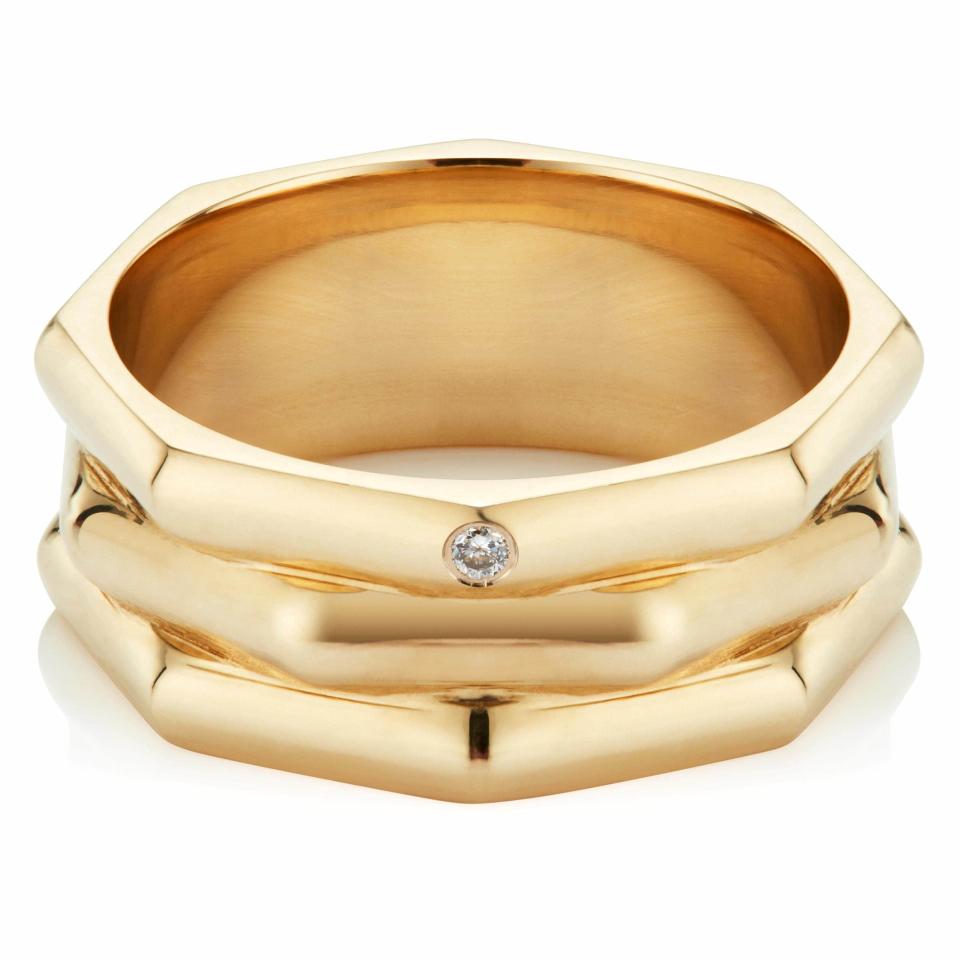
9kt Fairtrade gold and diamond Milestone Triple Band ring, £2,750, Roxanne Rajcoomar-Hadden
What’s most interesting is the effect she noticed on customer choices. “The resulting rise in retail prices has led some prospective clients, who have gold pieces on their wish lists, to reconsider their purchases,” she explains. “In another first for my time in the industry, the material price of gold surpassed platinum – which has led to a rise in platinum sales, especially in my bridal collection. And I think it has been about four years since the last time a client wanted anything made in palladium.”
Charlie Betts, managing director of Betts Group, a 260-year-old precious metal business, says that despite the steep hike in gold prices last year, there has been a strong demand for physical gold so far this year. Customers are buying gold bars and coins, presumably to lock away in their safes. But conversely, palladium doesn’t have the same attraction.
“We’ve seen a big dip in demand for palladium,” he explains. “It has gone up in price hugely, and ultimately it’s down to supply scarcity, as car manufacturers scrabble for the metal to use in catalytic converters. We’ve all but discontinued our palladium wedding rings to the trade, because demand evaporated.”
And if you’ve ever wondered why 18kt white-gold items are often slightly more expensive than their rose- or yellow-gold counterparts (compare Cartier’s Juste un Clou ring at £1,080 for white gold compared to £1,010 for the others), it’s the price of palladium that’s at fault. “18kt white gold is almost always alloyed with palladium to make it white,” explains Betts. “No one has come up with an alternative alloy that’s as effective.”
If palladium prices continue to go up and supply fails to keep up with demand, white-gold-loving consumers might need to settle for an alternative, like platinum – or a decent supply of spare catalytic converters.
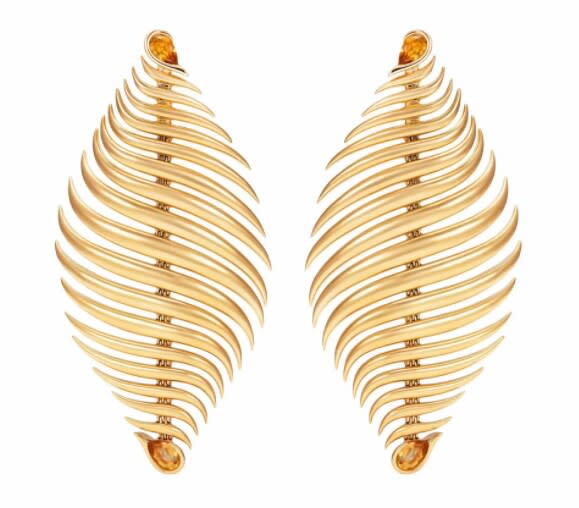
18kt gold and citrine Blaze earrings, £24,000, Fernando Jorge
Fernando Jorge, a London-based Brazilian designer whose collections range from all-gold to barely metal-based at all, has a steady-hands approach to fluctuating gold prices. “We always keep an eye on gold and try to avoid changes [to our prices],” he says. “If an adjustment is required we usually sync it with a new collection and a more general update. With the steep increase that happened last year it was no different; we adjusted our pricing across all collections alongside a new launch, which was already priced with the current gold cost. Jewellers cannot change all pricing every time there is a change in gold value or currency fluctuation, so it is normal to have a buffer to accommodate this.”
Jessica McCormack, who is known more for diamonds than gold, made the decision not to raise prices just because gold’s value went up so much during the pandemic. “I just trusted that the price would correct,” she says. “And in fact, it has come down a lot already. Brand new designs I can of course price according to current values, but for existing designs I don’t change the price because of market value. You have to roll with the punches. At the end of the day I’m selling jewellery and design, not metal.”

18kt yellow gold and diamond Splash earrings, £22,000, Jessica McCormack x Haas Brothers
One upside to the rising price of gold? Just look at the extraordinary Opium Poppy Crown that Thompson Royd has just unveiled – a lush bouquet of golden blooms to adorn the most deserving of Ophelia’s crowns.
“The biggest irony of this year was finally I had the time to create, and yet the gold price was unaffordable,” he says. “Luckily though I wasn’t idle, and with the gold price now beginning to stabilise I am converting all those lockdown brass models into post-Covid gold treasures.”
Sign up for the Telegraph Luxury newsletter for your weekly dose of exquisite taste and expert opinion.
